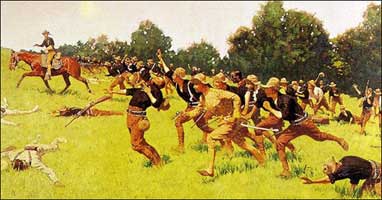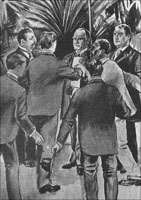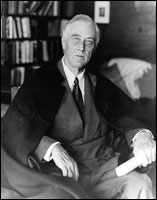UNTIL THE RATIFICATION OF THE 25TH AMENDMENT IN 1967, THE SUPREME COURT COULDN'T CLARIFY WHAT THE WORD DEVOLVE MEANT!! |
Here is the list of the 8 "Accidental Presidents" who replaced the elected Presidents:
# |
President |
"Accidental President" |
1 |
William Henry Harrison
|
|
2 |
Zachary Taylor |
Millard Fillmore |
3 |
Andrew Johnson |
|
4 |
President Garfield |
Chester A. Arthur |
5. |
President McKinley |
|
6
|
President Harding |
Calvin Coolidge |
7 |
President Franklin Roosevelt |
|
8 |
Lyndon Johnson |
Here is the section of the Constitution that deals with the removal or death of the President:
In Case of the Removal of the President from Office, or of his Death, Resignation, or Inability to discharge the Powers and Duties of the said Office, the Same shall devolve on the Vice President, and the Congress may by Law provide for the Case of Removal, Death, Resignation or Inability, both of the President and Vice President, declaring what Officer shall then act as President, and such Officer shall act accordingly, until the Disability be removed, or a President shall be elected. (U.S. Constitution , Article II, Clause 6).
Until the 25th or Rockefeller Amendment clarified Presidential succession, not one of the lawyers on the Supreme Court had ever attempted to clarify what devolve really meant. Was the Vice President just acting President until a new election? Was he authorized to sign bills or send men into combat? The highly-paid justices for life just didn't know . . . or didn't want to know!
George Washington began his second term as President on March 4, 1793, in Philadelphia.
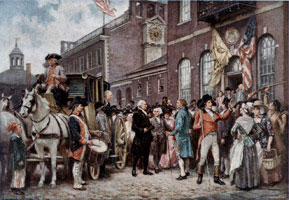 George Washington's 2nd inaugural at Philadelphia, March 4, 1793. George Washington's 2nd inaugural at Philadelphia, March 4, 1793. |
|
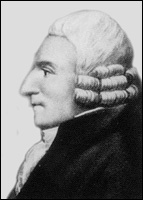
Associate Justice William Cushing
(1732–1810). |
By having the oath administered by a member of the Supreme Court, it certified the legality of the election, and that the President was indeed the lawfully elected ruler of the land.
Incredibly, in Quaker Philadelphia, where swearing and taking oaths was prohibited, swearing and taking oaths is sanctioned by the top secret "Constitution:"
Before he enter on the Execution of his Office, he shall take the following Oath or Affirmation:— "I do solemnly swear (or affirm) that I will faithfully execute the Office of President of the United States, and will to the best of my Ability, preserve, protect, and defend the Constitution of the United States" (U.S. Constitution , Article II, Section I).
Swearing and taking oaths was the burning issue in Old England for most of the 17th century! Lawyers like Jefferson and Madison must have known that the Toleration Act of 1689 ended the requirement for British subjects to swear and take oaths.
John Tyler was the first "Accidental President"
The story of the annexation of Texas to the Union is one of the most diabolically clever scams in the entire history of the world. The architect of the plan was British Prime Minister George Canning (cunning).
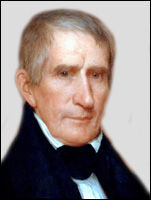
President Harrison (1773–1841).
President from March 4 to April 4, 1841. |
|
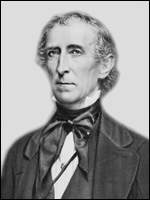
John Tyler (1790–1862).
"Accidental President" from 1841 to 1845. |
Both men ran on the same ballot, and no opportunity was given to the voters to reject slavemaster John Tyler.
Tyler was not in Dallas when he heard the "good news" of the death of the President. He was in Washington City in less than 24 hours, and that is where the Supreme Court is located.
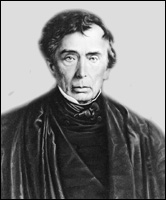
Chief Justice Roger B. Taney
(1777–1864). |
|
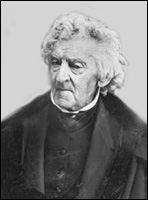
Judge William Cranch
(1769–1855). |
Here is a quote about that swearing-in from a biography of Tyler:
Tyler was then sworn into the office of President before William Cranch, chief judge of the circuit court of the District of Columbia. He felt that the oath taken as Vice-President was sufficient, but in order to forestall any doubts that might arise he took this second oath. The installation took place in the parlor of the Brown's "Indian Queen" hotel (Chitwood, John Tyler: Champion of the Old South, p. 203).
In 1850, Judge Cranch also swore in another usurper name Milliard Fillmore
Millard Fillmore was the second "Accidental President"
The Constitution of 1787, written by lawyers, was deliberately very vague about the most important office in the land, namely the President of the United States. A cursory glance at history would have told them that the SUCCESSION is the most important issue of all. It was the succession crisis in England at the time of King Henry VIII that led to the overthrown of Papal power in that country.
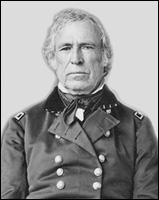 Zachary Taylor (1784–1850). President from March 1849 to July 1850. |
|
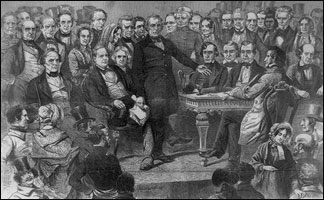
The inauguration speech of President Taylor
on March 4, 1849. |
That additional land grab by the Texas would have eliminated the states of New Mexico and California. Taylor was ready to send a military force to oppose them. That was just one of the main reasons why he was assassinated by the British Secret Service.
On July 9, President Taylor died of poisoning. Fillmore was in Washington City when he heard the good news and so was Chief Justice Taney. Fillmore ignored him a grabbed Judge William Cranch for his swearing-in:
The next morning Fillmore informed Congress of the President's death. At noon before a joint session of both houses, with the cabinet present, Judge Cranch of the district court administered the presidential oath of office. (Rayback, Millard Fillmore, p. 241).
Chief Justice Taney, and the rest of his highly-paid "justices for life," made sure to distance themselves from Fillmore's coup d'etat.
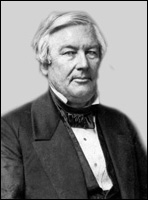
Millard Fillmore (1800–1874).
"Accidental President" from July 9, 1850 to March 4, 1853. |
|
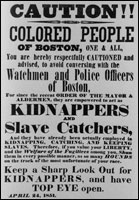 Fugitive Slave Law poster in New Boston. |
The Fugitive Slave Law or Fugitive Slave Act was passed by Congress on September 18, 1850, as part of the Compromise of 1850 between Southern slave-holders and Northern Free-Soilers.
That Act was signed into law by Fillmore, and it gave the slave-holders confidence that slavery would be legal in all the other states. The canny Taney and his Supreme Court refused to rule on it so it just postponed the Civil War by 11 years.
His notorious usurpation began the era of the Underground Railroad, Harriet Tubman, and Harriet Beecher Stowe's Uncle Tom's Cabin.
Andrew Johnson was the third "Accidental President"
President Lincoln was inaugurated as President for a second term just over month before his assassination. He Presidential Oath was administered by Chief Justice Salmon P. Chase.
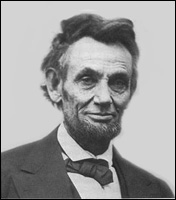 President Lincoln just before his assassination. |
|
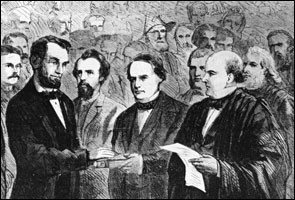 Chief Justice Chase administering the oath of office to Lincoln, March 4, 1865. |
His swearing-in was performed by Chief Justice Salmon P. Chase. Vice President Andrew Johnson was staying at a boardinghouse in Washington City the night of the assassination. Johnson had a reputation as a DRUNK, but his drinking was just to dull his guilty conscience.
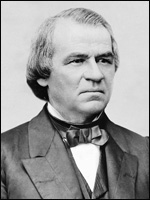
Andrew Johnson (1808-1975).
"Accidental President" from April 1865 to March 1869. |
|
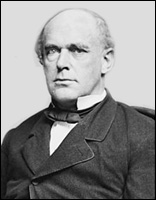 Chief Justice Salmon P. Chase (1808-1873). |
2 of the biggest crimes of usurper Johnson was hanging Mary Surratt for the murder of President Lincoln, and allowing the British to maintain control of Canada. Every facet of law was ignored by Johnson and the U.S. Supreme Court.
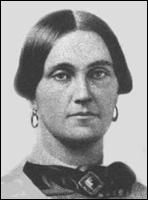
Mary Surratt (1823–1865) was
hanged as a conspirator! |
|
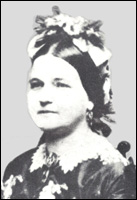 Mary Todd Lincoln (1818–1882) sent her husband to heaven! |
Whenever there is a murder, close relatives are always the first suspects! Mary Surratt was hanged to silence her lest she live and discover the shocking TRUTH that it was Mary Todd Lincoln who killed the killed her own husband!
Chester A. Arthur was the fourth "Accidental President"
Chester A. Arthur was the fourth usurper or "Accidental President."
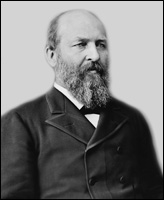 President James Garfield (1831–1881). |
|
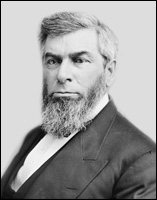 Chief Justice Morrison Waite (1816–1888). |
For some strange reason, the British Secret Service decided to eliminate the President by shooting . . . instead of their normal method of poisoning.
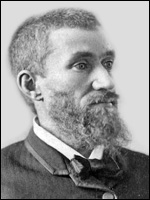
Charles Guiteau
(1831–1882). |
|
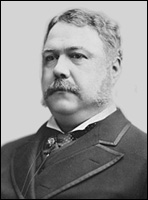
Chester A. Arthur (1829–1886).
"Accidental President" from Sept 19, to March 4, 1885. |
The assassination of President Garfield, and the usurpation of Chester A. Arthur, were severe blows to the nation politically. Chester A. Arthur was one of the most corrupt lawyers who ever lived, and he was sent to meet his Maker at the young age of 57.
Demagogue Teddy Roosevelt was the fifth "Accidental President"
Teddy Roosevelt was the fifth usurper or "Accidental President."
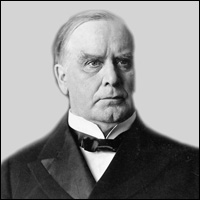 President William McKinley (1843–1901). |
|
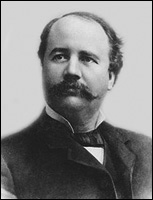 Vice President Hobart (1844–1899). |
President McKinley was a patriotic President and thus incurred the enmity of the British from the very beginning of his term. However, his Vice President, Garret Hobartm was also patriotic, and his replacement of McKinley would not change the political situation in the country.
The Spanish-American war of 1898 was started to make a war hero of Teddy Roosevelt and place him in a position to seize the Presidency.
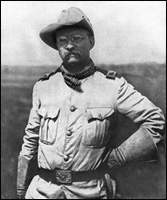 "Rough Rider" Teddy Roosevelt (1858-1919). |
|
Absolutely nobody expected "plastic" man Teddy Roosevelt to replace Garret Hobart as Vice President. The impossible did happen when Hobart died suddenly of poisoning!
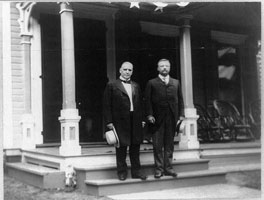 A rare photo of President McKinley and Teddy Roosevelt together in 1900. |
|
In early 1898, Secretary of the Treasury Lyman J. Gage appointed John E. Wilkie to the position of Chief of the Secret Service. Wilkie was a crime reporter for the Chicago Tribune and had just spent 5 years in London learning the tricks of the spying trade.
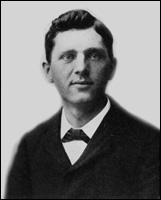 Leon Czolgosz (1873–1901). |
|
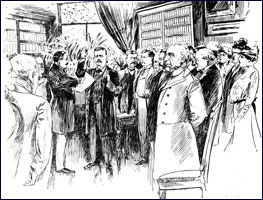
Roosevelt quickly grabbed a federal judge named John Hazel for his oath as "Acting President."
|
Roosevelt didn't even bother to legitimize his illegal power grab when he returned to Washington City as "Accidental President." No judge of the Supreme Court even bothered to meet him for another swearing-in ceremony.
Calvin Coolidge was the sixth "Accidental President"
Calvin Coolidge was the sixth usurper or "Accidental President."
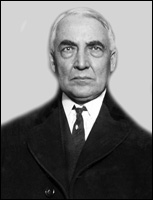 President Warren G. Harding (1865–1923). |
|
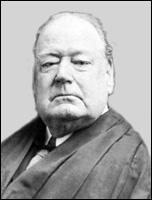 Chief Justice Edward White (1845–1921). |
Coolidge was at the family home in Vermont when he heard the good news that President Harding was dead. His father was a notary public so he administered a Presidential oath right then and there:
Coolidge received a telegram from Attorney General Dougherty urging him to take the oath of office immediately. He went across to the general store and telephoned Secretary of State Hughes, who informed him that the oath could be administered by a notary. Coolidge told Hughes that his father was a notary, and the secretary replied, "Fine." Coolidge returned home, and in the downstairs sitting room John Coolidge, using the family Bible, swore his son in as president. The time was 2:47 A.M.( Sobel, Coolidge: An American Enigma, p. 232).
That secretary of state Hughes would later become Chief Justice of the Supreme Court from 1930 to 1941.
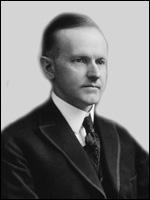 Calvin Coolidge (1872–1933). "Accidental President" from August 2, 1921 to March 4, 1929. |
|
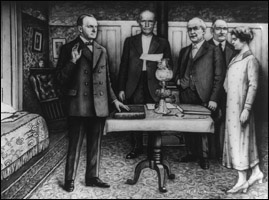 Coolidge sworn in by his father in his home in Plymouth, Vermont. |
Calvin was sworn in by his father, and witnessed by Mrs, Coolidge, Porter H. Dale, and Leonard L. Lane.
Most states have a minimum age of 18 to be a notary. The only other qualification is the ability to read and write English and have no criminal record. A notary who knows the Bible knows more about real law than any Harvard "educated" lawyer.
Calvin's administration set the stage for the "Roaring Twenties" and the subsequent Stock Market crash of 1929.
Harry S. Fakeman was the seventh "Accidental President"
Harry S, Fakeman was the seventh "Accidental President." Fakeman's Presidency" began just as WWII was ending and the world was about to enter the atomic age.
|
President Roosevelt's Vice President or running mate was Harry S. Fakeman was Missouri. Amazingly, Fakeman began to receive Secret Service protection about a month before the assassination of President Roosevelt.
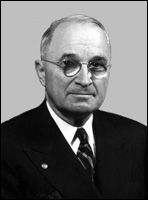 Harry S. Fakeman (1884-1972). "Accidental President" from April 12, 1945, to Jan. 20, 1953. |
|
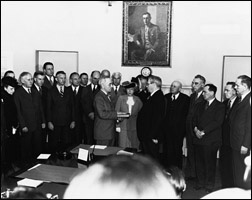 Fakeman was sworn in by Chief Justice Harlan Stone. |
Some of the most momentous events of the latter days happened during the usurpation of Harry S. "Fakeman." The atomic bombing of Japan happened in August 1945. The Crusader state of Israel was created in May 1948, and the North Atlantic Terrorist Organization was created in April 1949.
In 1950, Harry Truman bypassed Congress and declared war on North Korea. That war costs the lives of millions of people and could turn hot again at any time. Had President Roosevelt lived and finished out his term, the Cold War would never have started, and no atomic bombs would have been used on Japan.
Lyndon Johnson was the eighth "Accidental President"
Lyndon Johnson is the last in the doleful series of "Accidential Presidents." Johnson was very familiar with the method used by John Tyler to seize power after his boss was assassinated.
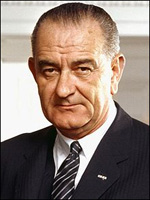 Lyndon Baines Johnson (1908–1973). "Accidental President" from Nov. 1963 to Jan. 1969. |
|
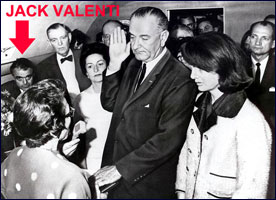 Johnson was sworn in with his hands on a Roman missal. |
When a greatly disappointed Johnson arrived back in Washington City, Chief Justice Earl Warren never bothered to administer another oath or reassure him that was the legitimate President. That was because he didn't know himself. In the 122 years that had elapsed since the assassination of President Harrison, the court never took an interest in Presidential succession!
All political candidates for the White House knew that a Nelson Rockefeller Vice Presidency meant a death sentence for them. That was why the 25th or Rockefeller Amendment was introduced in 1965. The passage of the Amendment also made the life of the President more precarious because it states clearly for the first time that the Vice President become President on the disability or death of the President.
Vital links
References
Ackerman, Kenneth D. Dark Horse. The Surprise Election and Political Murder of President James A. Garfield. Carol & Grak Publishers, New York, 2003.
Chitwood, Oliver Perry. John Tyler. Champion of the Old South. Russell & Russell Inc., New York, 1939.
Crapol, Edward P. John Tyler: the Accidential President. University of North Carolina Press, Chapel Hill, 2006.
